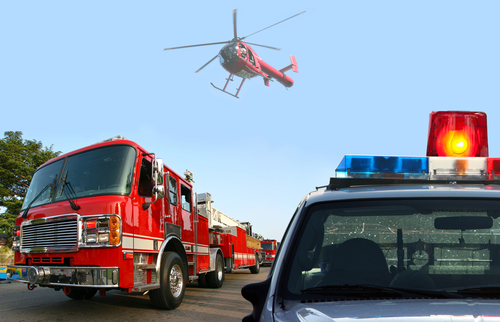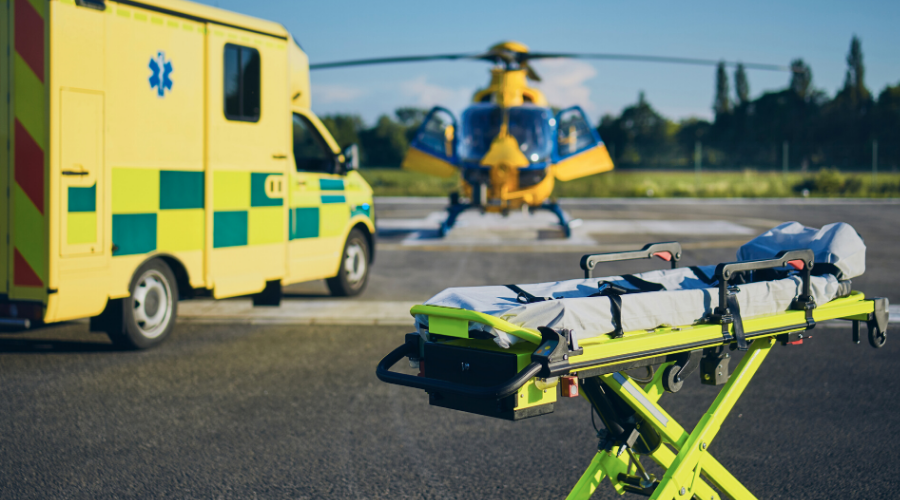Law enforcement aviation officers or airborne law enforcement officers are employed within an agency’s aviation unit. These officers can operate aircraft to perform search-and-rescue missions, routine patrols, and assist other operations.
In the United States, up to 18,000 agencies and departments use law enforcement aviation assets on a daily basis. In today’s post, we’ll talk about the path to becoming an airborne law enforcement officer.
Law Enforcement Aviation Officers: Responsibilities
Airborne law enforcement operations generally involve patrols, tactical-team transportations, EMS and search and rescue missions, inmate transport, and even firefighting operations.

Police aviation units often have fixed-wing or rotor platforms. The crews will generally consist of a Tactical Flight Officer and a pilot. The Tactical Flight Officer is the one primarily responsible for equipment operation that doesn’t relate to the actual flight.
With that being said, an aircraft unit does not officially become a law enforcement aviation until the Tactical Flight Officer says so and starts up all the equipment.
These equipment and devices include forward-looking infrared and video cameras and police radios, for instance.
Requirements for Being a Police Aviation Officer
Most police agencies in the United States require law enforcement aviation members to be sworn police officers, first and foremost. Many of these also order a minimum of three to five years of on-ground patrol experience.
There are four-year and community colleges and police academies that offer state-approved law enforcement certifications. This certification is an excellent stepping stone to get into the law enforcement profession.
When applying to be part of a police aviation unit, individuals with prior aviation experience will have higher chances to be selected. However, outside the United States, members of airborne law enforcement units are also commonly composed of civilian staff.
Flight Qualification Requirements
The Federal Aviation Administration implements pilot and aircraft regulations. However, airborne law enforcement units are exempt from these. Still, a majority of these units follow the accreditation guidelines developed by airborne law enforcement entities. It’s primarily required for pilots to have, at the very least, a commercial license to operate an aircraft.
Some aircraft units mandate police aviation candidates to hold a private pilot’s certification. Other units accept regular police officers and provide tactical flight training and pilot training. Some of the prerequisites for these training programs are a minimum of three years’ service commitment from accepted individuals.
What Do Law Enforcement Pilots Do?
Simply put, law enforcement pilots fly an airplane or helicopter for a police agency or law enforcement department.
Depending on the specific law enforcement department or agency, the responsibilities of a law enforcement pilot will vary. Generally, here are the basic duties of a law enforcement pilot:
- Perform aerial surveillance or patrol an area during a police operation or a community or local event
- Fly during search and rescue operations with the objective to provide necessary support in disaster recovery events.
- Law enforcement pilots are always on call to offer speedy responses during emergencies.
- Airborne law enforcement officers need to ensure that the aircraft is always ready to operate when needed and adequately maintained.
Becoming a Law Enforcement Pilot
Here are the qualifications you need to get a law enforcement pilot position:
- Flying experience and skills
- Pilot license
- Accredited flight hours
- Specialized training
Police agencies and law enforcement departments require airborne police officers to remain available and on-call every day as necessary. For fixed-wing aircraft or helicopters, law enforcement pilots need a commercial license.

Some employers require a specific amount of flight hours to qualify for a pilot position with them. Others prefer pilots with a background in the military.
Either way, flying experience, skills, and a pilot license are necessary to acquire before you can become a law enforcement pilot.
Many agencies and organizations offer additional flight training for the pilots they hire. Some of these specialized training classes include undergoing aviation night vision flight training.
Some agencies also provide a mandatory basic agency training or law enforcement training program if necessary.
Law Enforcement Aviation: Important Career Considerations
Salary is one of the more important considerations when choosing a profession. With law enforcement aviation, similar to other occupations, salary is influenced by a number of factors. The salary is also commonly increased with bonuses and incentive pay.
It’s common for police aviation officers not to accept any promotions, as this means they will have to be removed from the aviation unit. Still, more and more police departments are incorporating unmanned aerial systems, or more popularly known as drones, into their law enforcement equipment.
Law enforcement drones are allowed under the FAA’s Part 107 rules. These guidelines require pilots who operate commercial aircraft to hold a private pilot’s certification. With the current trends in the law enforcement industry, these positions are most likely here to stay.
Important Component of Law Enforcement Operations
Aviation aircraft units are a vital component of day-to-day law enforcement operations. They are, without a doubt, a significant advantage to police forces. These airborne units offer essential services to the population. They also provide quick responses to emerging threats, all while ensuring the safety of the responding police officers and the people.
From getting a bird’s eye view perspective of the scene to the use of specialized infrared sensors, a career in law enforcement aviation is invaluable.
Important Career Consideration for Law Enforcement Aviation Officers
The salary of a law enforcement aviation officer will depend on their police rank. This situation is also augmented with other bonuses or incentive pay.
The average annual salary of a law enforcement pilot in the United States is $67,500. Obviously, other factors will influence the salary of a law enforcement pilot.

It’s not uncommon for lots of law enforcement aviation officers to reject a promotion as there’s a likelihood they will have to exit the aviation unit.
All About Airborne Law Enforcement
If you want to make a career out of being a police officer in the air, airborne law enforcement may be the right career path for you.
Law enforcement pilots, also called airborne law enforcement officers or law enforcement aviation officers, work within the aviation units of law enforcement agencies and police departments.
These officers operate an aircraft to assist with or conduct operations. These missions range from routine and basic patrol to complex and time-sensitive search and rescue.
According to the U.S. Department of Justice, about 300 of the 18,000 federal, state, and county local agencies utilize daily airborne assets. However, a significant portion doesn’t disclose specific personnel and aircraft number for security reasons.